Last-Minute NYC Holiday Gift Guide 🎁
We’ve created a holiday gift guide with presents for the intrepid New Yorker that should arrive just in time—


The familiar aroma of garbage trucks fill the streets of New York City’s boroughs on any given day of the week. The Department of Sanitation (DSNY) is responsible for that often foul stench, but they are also the city agency that keeps our streets free of excessive trash, junk and general debris. Though it was formed in 1881, the Department of Sanitation, formerly known as the New York City Department of Street Cleaning, did not do much for the city until 1895. Here are ten fun facts about you may not have known about the New York Department of Sanitation.
In 1895, former Civil War officer George E. Waring Jr. was appointed the Street Commissioner of New York City. Robin Nagle, Anthropologist in Residence for the Department of Sanitation and the author of Picking Up told Collectors Weekly that New Yorkers were “literally shin-high or knee-high in this muck that was a combination of street gunk, horse urine and manure, dead animals, food waste and furniture crap.” To remedy this, Waring assembled a team of street cleaners he called the “White Wings” after their pristine white uniforms they wore while picking up trash.
According to Susan Kriete, a reference librarian at the New York Historical Society, Waring wanted his workers to don the conspicuous uniforms so that they were more likely to work and less likely to grab a drink at the local saloons. Sanitation workers continued to wear white uniforms until the 1930s.
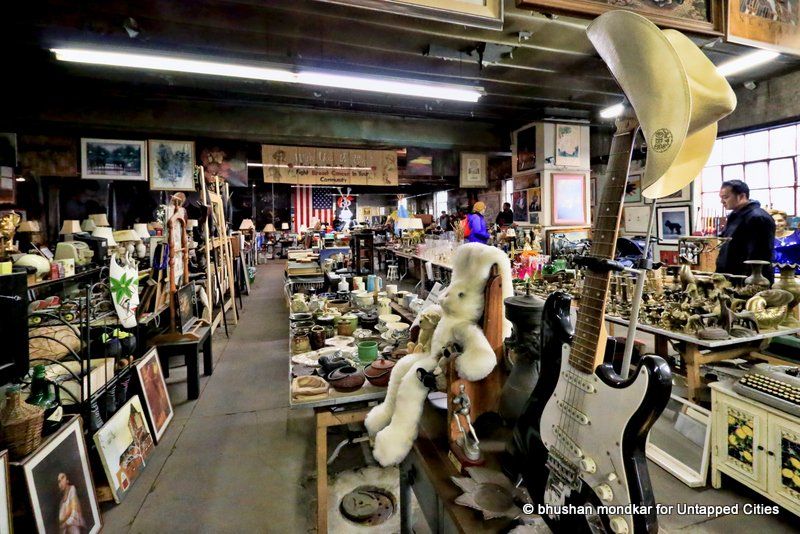
In East Harlem at DSNY Sanitation Garage 11 on 99th Street between First and Second Avenues is a trash collection that would rival Ariel’s treasure trove in The Little Mermaid. Nelson Molina has been curating trash for over thirty years for the “Treasures in the Trash Museum,” as he calls the collection, housed in the sanitation garage. The collection features over 50,000 “found items” that Molina gathered during his time with the Sanitation Department.
Molina says that more than 90 percent of the objects were collected from his DSNY route in Manhattan’s 11th District, between 96th Street and 110 Street and between 1st and 5th Avenues. The items in the museum are laid out and organized into themes, including a table of typewriters, a section with baseball paraphernalia and a variety of chairs. The DSNY is currently in the process of finding a new home for “Treasures in the Trash.” See more photos inside the gallery here.
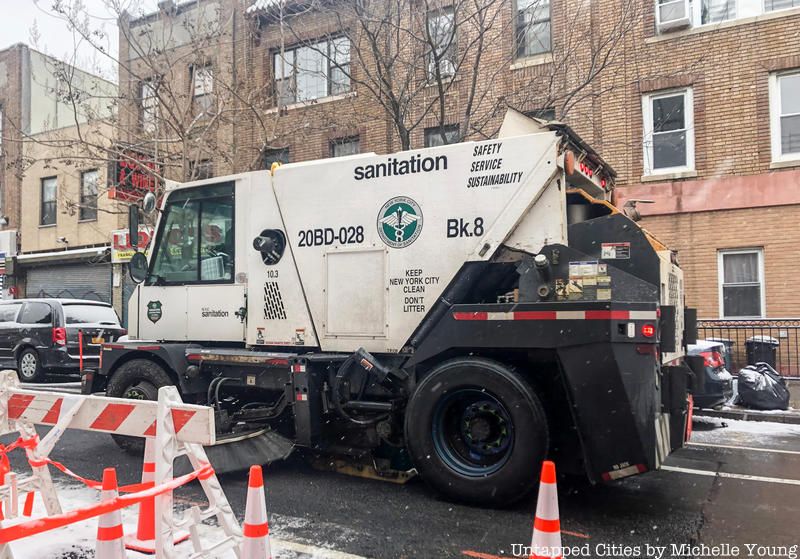
A street sweeper
New York City is the largest city in the United States, so it’s only fitting that it has the biggest sanitation department. According to its website the DSNY is composed of over 7,900 uniformed sanitation workers and supervisors, over 2,040 civilian workers, 2,230 collection trucks and 450 mechanical street sweepers. The DSNY collects 10,500 tons of residential and institutional garbage as well as 1,760 tons of recyclables. This does not include commercial waste, which is handled by private companies.
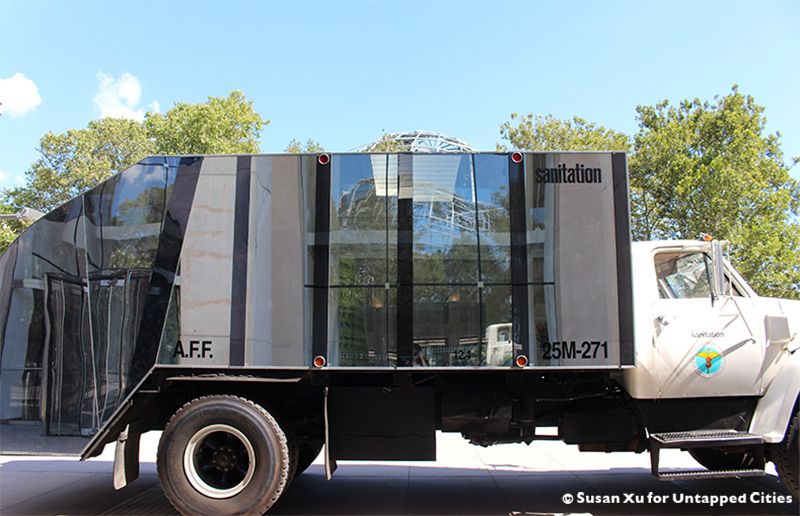
Since 1977, Mierle Laderman Ukeles has been the artist in residence for the New York City Department of Sanitation. In an interview with Observer, Ukeles said that her first “project” as artist in resident was going to the 59 sanitation districts to shake hands and thank 8500 sanitation workers – a feat which took a year and a half to complete. In the 1980s Ukeles designed The Social Mirror Truck which is a reflective garbage truck that debuted in the 1983 NYC Art Parade. She has also played an important role in the Fresh Kills Park project, advocating for a public park at the former landfill site since 1989. To date, Ukeles is the only artist in residence for the DSNY.
 A rendering of the future of Fresh Kills Park – Image from NYC Parks
A rendering of the future of Fresh Kills Park – Image from NYC Parks
For most of the 20th century, Staten Island was the trash capital of New York. The borough was home to Fresh Kills landfill, which was once the largest landfill in the world, spanning 2,200 acres. By 1955, Fresh Kills was the principal landfill for all household garbage in the city. The landfill was opened in 1947 by New York City Sanitation Commissioner, William Carey.
It was intended to be used temporarily for the first 20 years and then be converted into a multi-use area “with residential, recreational and industrial components.” It closed on March 22, 2001, but temporarily reopened following the attacks on September 11th. Presently, Fresh Kills is undergoing transformation to become Freshkills Park, which upon completion in 2030, will be three times the size of Central Park.
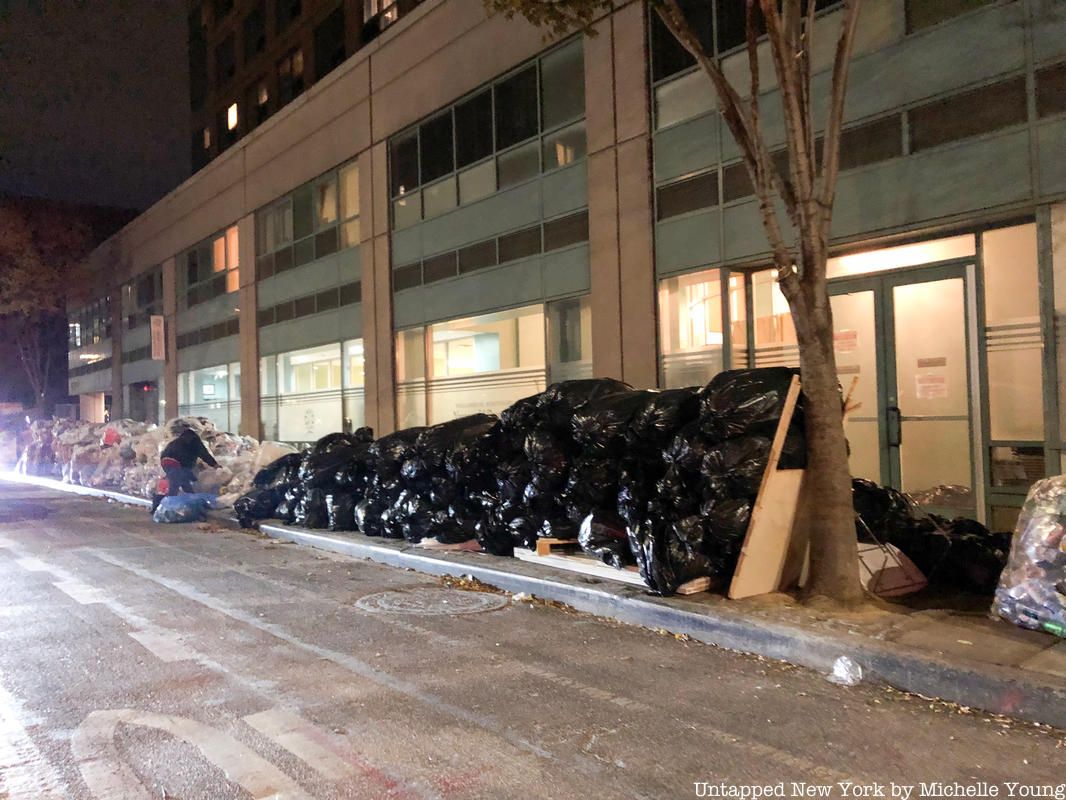
One of the most notable events in New York history was the Great Garbage Strike of 1968. Before the strike, the Uniformed Sanitationmen’s Association (USA) had been working without a contract for six months. Mayor John Lindsay proposed terms that would give sanitation workers a $400 salary increase, improve pensions and double pay for working Saturdays. The workers, led by John DeLury rejected the deal and went on a nine-day strike in February of 1968. The strike was illegal under the Taylor Law and DeLury was sent to jail.
During the strike, trash on the streets accumulated at a rapid rate, going from 30,000 tons to 100,000 tons of trash. Lindsay threatened to call the National Guard to clean up the trash, but Governor Nelson Rockefeller and local unions opposed this plan. In the end, Rockefeller offered the sanitation workers $425 and future arbitration, to which they agreed.
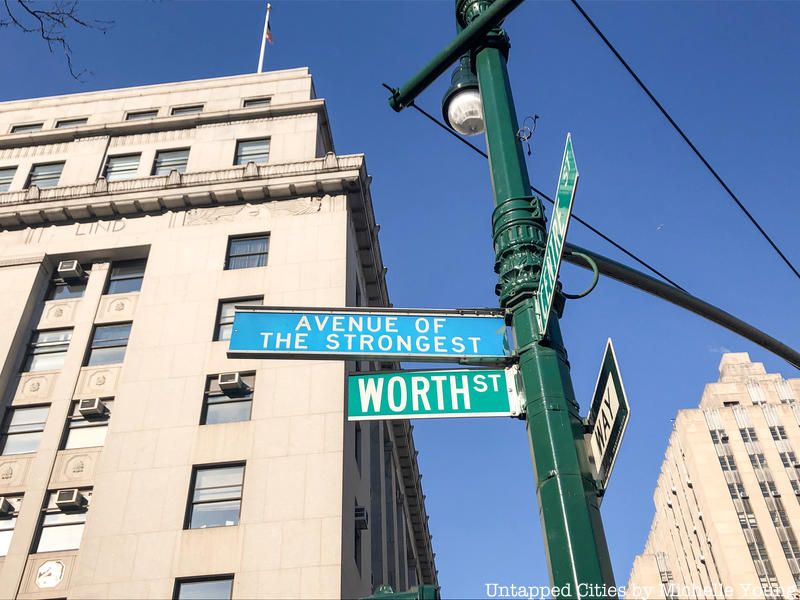
In the same vein of “New York’s Finest” and “New York’s Bravest,” the Department of Sanitation has a moniker by which it is also known: “New York’s Strongest.” The nickname was originally coined by Harry Nespoli for the Department’s football team in the 1970s and 1980s. The purpose of adopting the name for the department was to boost the morale of sanitation workers and to honor them in the same way as the police and fire departments honor their members. Worth Street between Centre and Baxter Streets in Manhattan is also known as “Avenue of the Strongest,” a designation assigned in 1996 by former Mayor Rudy Giuliani.
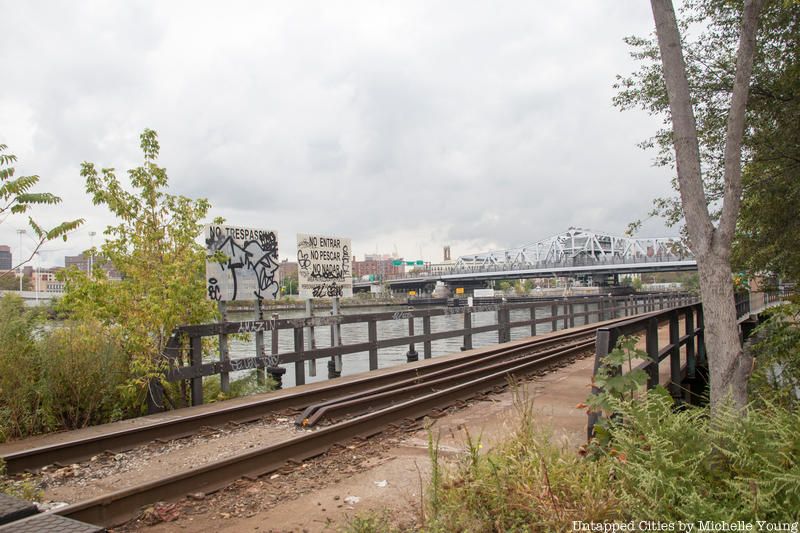
An active freight rail track that moves garbage from the Bronx to locations out of state
Prior to 2001, New York City’s trash was sent to the Fresh Kills landfill to be sorted and disposed. But when Fresh Kills closed permanently following September 11, 2001, the city began sending its trash away from the five boroughs. Today, New York exports 85 percent of its trash to landfills in New Jersey, Pennsylvania, Virginia and upstate New York. In 2014, it cost an estimated $300 million per year to export New York’s garbage.
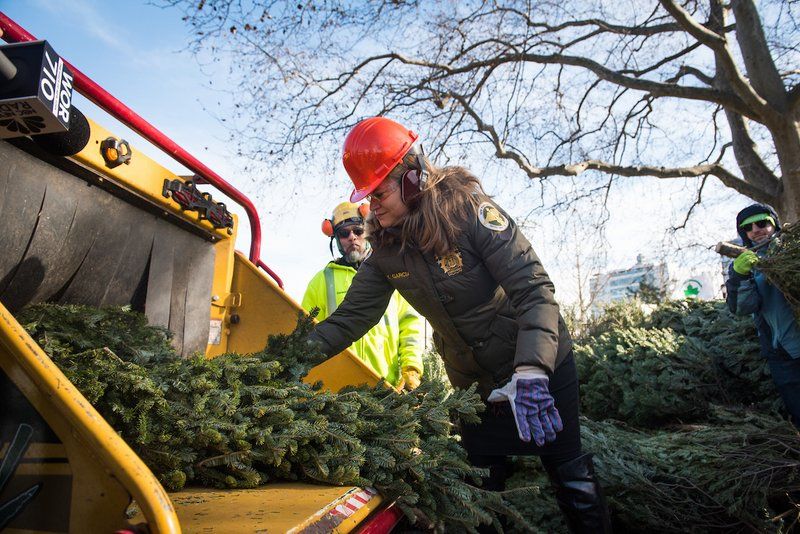 Kathryn Garcia at Mulchfest. Photo: Edwin J. Torres/Mayoral Photo Office.
Kathryn Garcia at Mulchfest. Photo: Edwin J. Torres/Mayoral Photo Office.
The first sanitation commissioner for the DSNY was George E. Waring Jr., and since then there have been ten people to assume the role. The first female sanitation commissioner was Emily Lloyd, who held the post from 1992 to 1994. She served as the Commissioner for the Department of Environmental Protection from 2005 to 2009 and again from 2014 to the present. The second female Commissioner for the Department of Sanitation is Kathryn Garcia, who was appointed by Mayor de Blasio in March 2014. Before her current post, Garcia had multiple roles within the DEP including Chief Operating Officer, Deputy Commissioner and Assistant Commissioner for Strategic Projects.
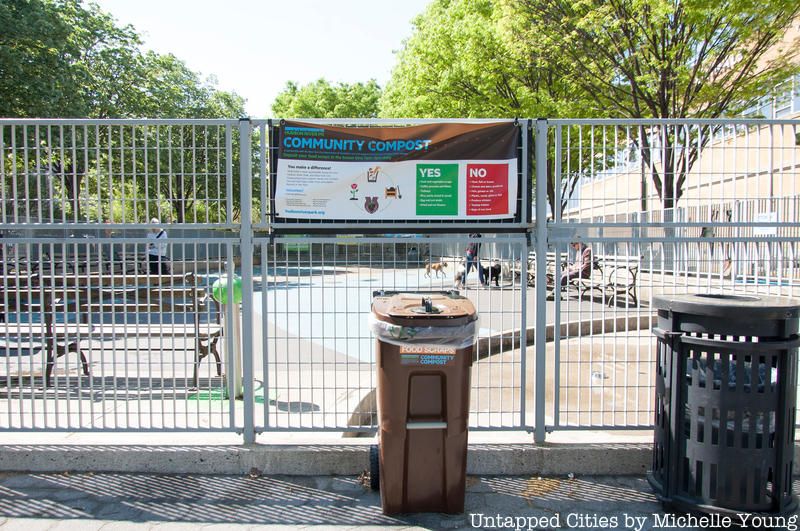
In 2012, Sanitation Commission John J. Doherty said that New York City spent $85 million exporting organics to out-of-state landfills. 35 percent of the waste that the DSNY collects is organic material and can be composted. On its website, the DSNY proposes a number of ways to compost organic material, including urging residents to be a part of the DSNY’s Organics Collection Pilot Program, composting waste at home or within your community and dropping off material at designated drop-off sites around the city. McEnroe Organic Farms use the organic compost for the crops on their farms that are eventually delivered in New York City restaurants and greenmarkets.
Next, read about 10 Fun Facts About the Sunset Park Material Recovery Facility, NYC’s State of the Art Municipal Recycling Facility. When the author isn’t writing about literal trash, she’s Tweeting @jen_bagcal.
Subscribe to our newsletter